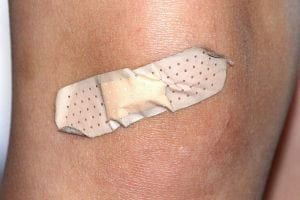Welcome to the Rare Classroom, a new series from Patient Worthy. Rare Classroom is designed for the curious reader who wants to get informed on some of the rarest, most mysterious diseases and conditions. There are thousands of rare diseases out there, but only a very small number of them have viable treatments and regularly make the news. This series is an opportunity to learn the basics about some of the diseases that almost no one hears much about or that we otherwise haven’t been able to report on very often.
Eyes front and ears open. Class is now in session.

The rare disease that we will be learning about today is:
Von Willebrand Disease
What is Von Willebrand Disease?
- The most common type of bleeding disorder
- A genetic disorder but can be acquired in rare cases
- More common and usually less serious than hemophilia
- Named after Finnish physician Erik von Willebrand, who first described it in the 1920s
- When injured, (tiny cell fragments that circulate in the blood), collect at the site of injury, forming a plug to stop bleeding.
- Those with VWD have decreased or malfunctioning Von Willebrand factor (VWF) activity and cannot form a proper platelet plug.
- Von Willebrand factor is the “glue” that binds platelets to one another and to the lining of the blood vessel
- VWF is the protein that makes platelets stick together to form a platelet plug
- VWF protects another clotting factor – Factor VIII – from being broken down
- Affects males and females equally but often a greater impact on women due to the bleeding challenges of menstruation and childbirth
- For most, VWD is a mild, manageable bleeding disorder
- Often, clinically severe hemorrhage manifests only in the face of trauma or invasive procedures
- In those with VWD types 2 and 3, bleeding episodes may be severe and potentially life threatening
- Those with type 3 VWD may develop joint disease called arthropathy as a result of repeated bleeds.
- There are three types of VWD:
- Type I
- Mildest form
- Most common – accounts for 70-80% of cases
- Has low levels of VWF
- May have low levels of Factor VIII
- Type 2
- Found in 15-30% of patients
- VWF doesn’t function properly
- 4 subtypes
- 2A
- Reduced VWF that fails to bind to platelets
- Reduced ability of platelets to clump together to form a clot
- Mild to moderate mucosal bleeding
- 2B
- Platelets that have an increased ability to clump together
- Platelets clump together prematurely in the bloodstream rather than at the site of blood vessel injury
- Mild to moderate mucocutaneous bleeding; risk of thrombocytopenia
- 2M
- Decreased activity of VWF – fails to interact with platelets
- Mild or moderate mucocutaneous bleeding
- 2N
- Failure of VWF to transport factor VIII to the site of injury
- Reduced levels of factor VIII in the blood
- Excessive bleeding following surgery
- Can resemble the mild form of classic hemophilia
- Type 3
- Most severe form
- Found in 5% of cases
- Almost a complete absence of VWF
- Type I
How Do You Get It?
- Cause is genetic in the majority of cases
- Some cases due to spontaneous genetic mutations
- Mutations in the VWF gene cause VWD
- Type 1 and Type 2 are usually inherited as an autosomal dominant trait
- Type 3 is inherited as an autosomal recessive trait
- The VWF gene is located on the short arm (p) of chromosome 12 (12p13)
- In rare cases when VWD is acquired and not inherited, the cause is unknown. It may be due to an autoimmune disease, hypothyroidism or certain medications
What Are The Symptoms?
- Prolonged, recurrent nose bleeds
- Prolonged bleeding from minor cuts
- Heavy or longer than usual menstrual bleeding
- Blood in the urine
- Blood in the stools
- Large bruises
- Bruising without recognized trauma
- Gums bleed easily
- Prolonged bleeding following surgery, trauma, or childbirth
- Heavy periods and/or periods lasting more than 7 days
How Is It Treated?
- Treatment for VWD depends on the type and severity
- In mild cases, treatment may only be needed before undergoing surgery or a dental procedure or following trauma or injury
- Treatment is focused on controlling bleeding
- Treatment can:
- Increase production of VWF; Replace missing or deficient VWF; Prevent clots from dissolving; Stimulate clot formation.
- Federally-funded hemophilia treatment centers (HTCs) are recommended as a good place to obtain treatment
- Lifestyle changes
- May need to avoid aspirin and NSAID’s
- May have to take precautions to avoid injuries, such as avoiding contact sports. (not necessary for most people with type 1 and some with type 2 VWD)
- Discuss VWD with surgeon or dentist ahead of any surgeries
- Desmopressin (DDAVP)
- Considered the first treatment to use in management of VWD
- A synthetic hormone, similar to the natural hormone vasopressin
- Controls bleeding by stimulating the body to release more VWF already stored in the lining of blood vessels — thereby enhancing factor VIII levels
- Administered through a nasal spray called Stimate or through injection
- Usually effective in people with Type 1 and some subtypes of Type 2
- Some women use Stimate at the beginning of menstrual periods to control excessive bleeding
- Not indicated for individuals with most types of type 2 VWD and severe VWD
- Replacement Therapy
- Used for those with severe VWD or with mild or moderate disease who cannot use or do not respond to treatment with desmopressin
- Concentrated forms of VWF and factor VIII created from the plasma of thousands of different blood donors
- Treatment of choice in VWD types 2M and type 3 and for some individuals with VWD type 2B
- Those with VWD type 3 often receive VWF/FVIII concentrates as a preventive therapy against the development of musculoskeletal bleeding and joint damage
- FDA approved replacement therapies include: Humate-P, Alphanate, Wilate and Vonvendi
- Administered via IV infusion
- Fibrin glue
- A sealant for superficial bleeding
- Applied directly to the site of bleeding
- Acts to hold platelets together to strengthen a clot
- Often used for surgery or dental procedures in affected individuals
- Manufactured from various clotting factors obtained from donated plasma
- Antifibrinolytics
- Slow the breakdown of clotting factors in the blood
- Can be given for the prevention or treatment of bleeding episodes
- Drugs include: aminocaproic acid (Amicar) and tranexamic acid (Cyklokapron, Lysteda)
- Given orally in pill form, as a mouthwash or by injection
Where Can I Learn More???
- Learn more about this disease from the National Hemophilia Foundation.
- Check out our cornerstone on this disease here.








